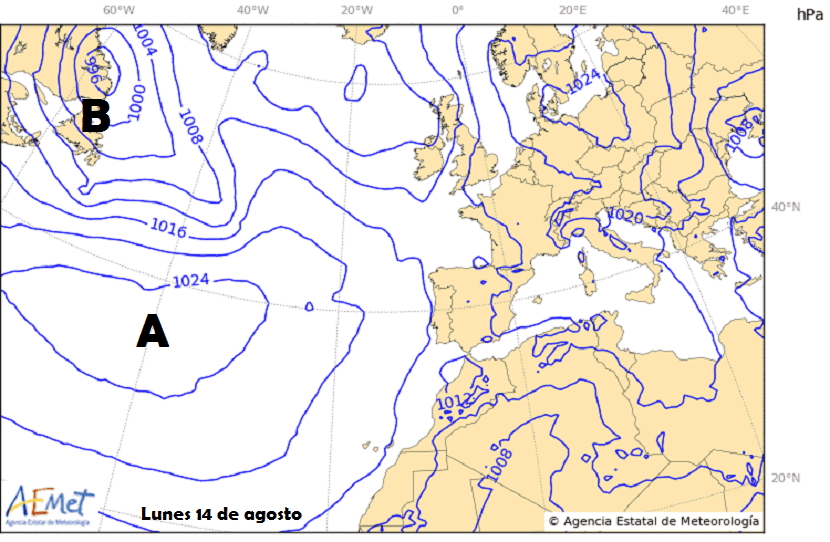
Difference between anticyclone (A) and squall (B)
Storms and anticyclones refer to the different pressures of the atmosphere. Atmospheric pressure is measured in millibars (mbar). A millibar is equal to one thousandth of 1 bar, and a bar is equal to 1 atmosphere (atm). It is important to know what a millibar means, since the difference of more or less millibars in a region creates storms and anticyclones.
Before going into details, anticyclones and storms are easily identifiable on a map taking isobars into account. If there is more pressure than normal, for example 1024 mb, it is when we speak of an anticyclone. When the pressure is low, for example 996 millibars, as it appears in the image, we talk about a storm. From here, the climate associated with the different pressures is different.
The anticyclone

Usually we could compare it to stable time, with a clear sky and with Sun. Its pressure is approximately from 1016 millibars or more.
The air in an anticyclone is more stable than the air around it. In turn, the air descends downward from the atmosphere, producing the phenomenon known as "subsidence." Subsidence as such prevents the formation of precipitation. The way the air descends varies according to the hemisphere where we are. In the northern hemisphere, it swirls down in a clockwise direction. And in the southern hemisphere, the opposite.
Storm

Contrary to the anticyclone, is related to unstable weather, cloudy skies and rainfall. Its pressure is less than 1016 millibars.
The direction of rotation of the air in the storm, which in this case rises upwards, does so in the opposite direction to the anticyclone. That is, clockwise in the southern hemisphere and counterclockwise for the northern hemisphere.
They usually bring winds, and minimize the temperature, both in summer and winter. It usually occurs due to the entry of fewer solar rays, as the clouds reflect them, preventing them from passing.